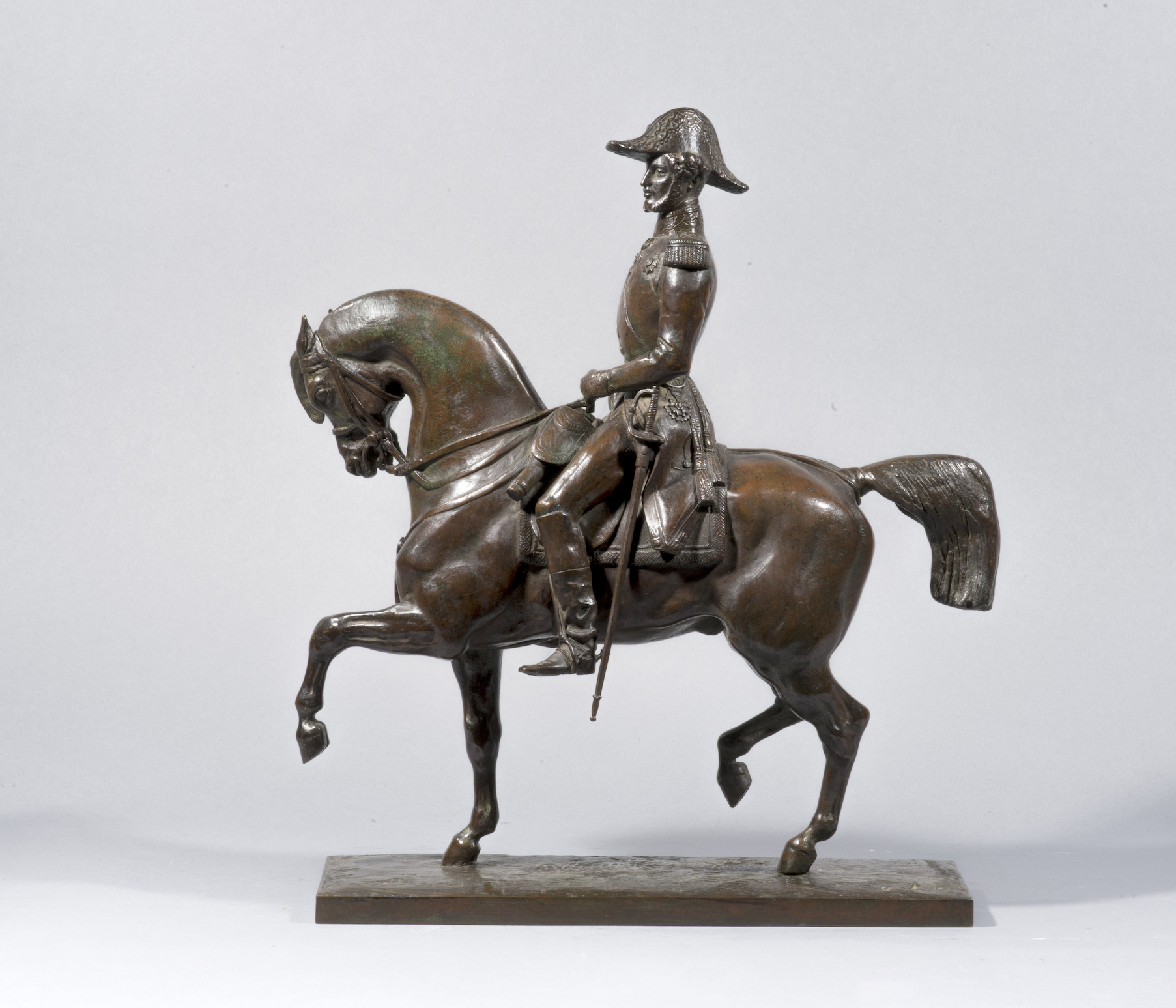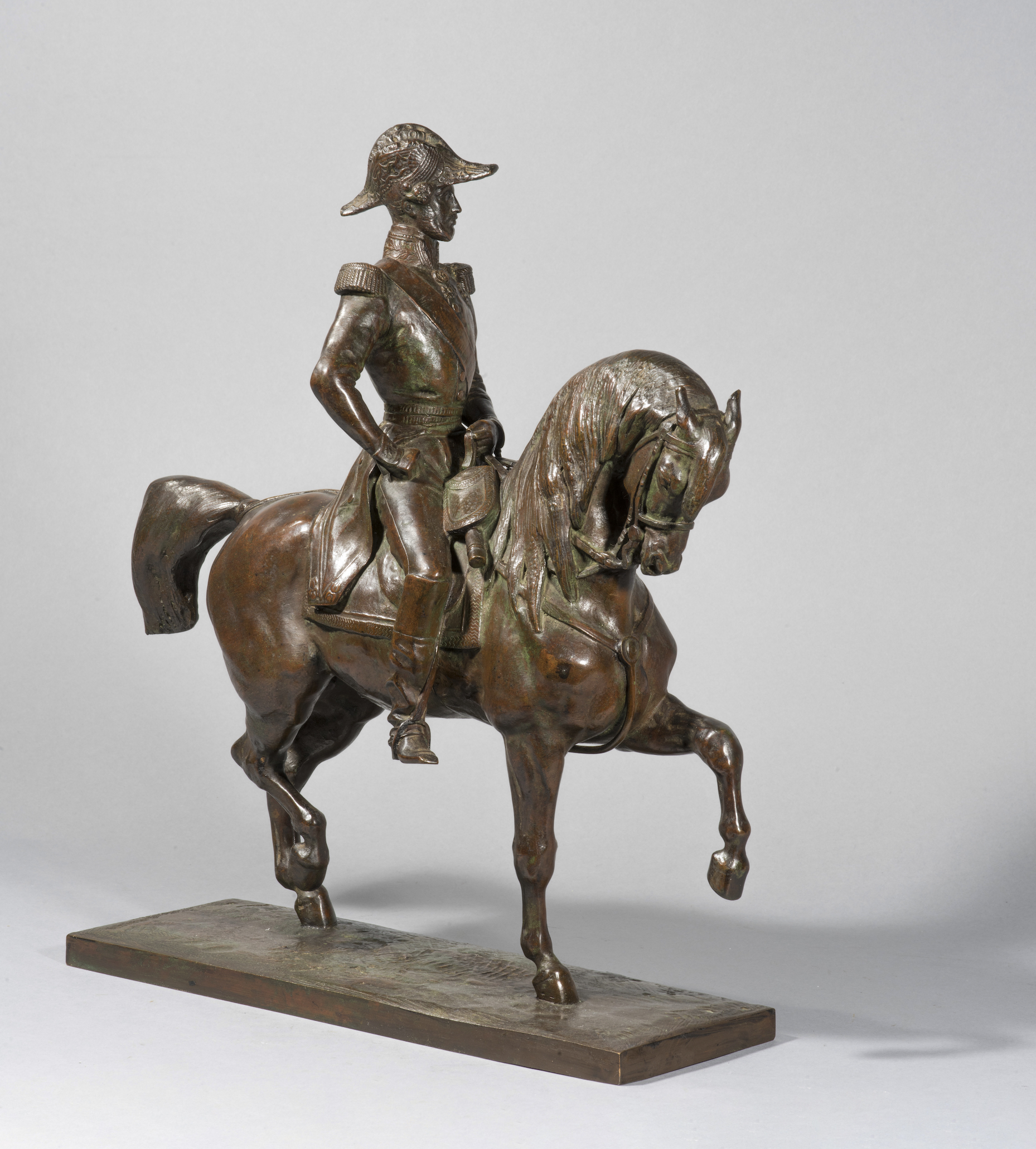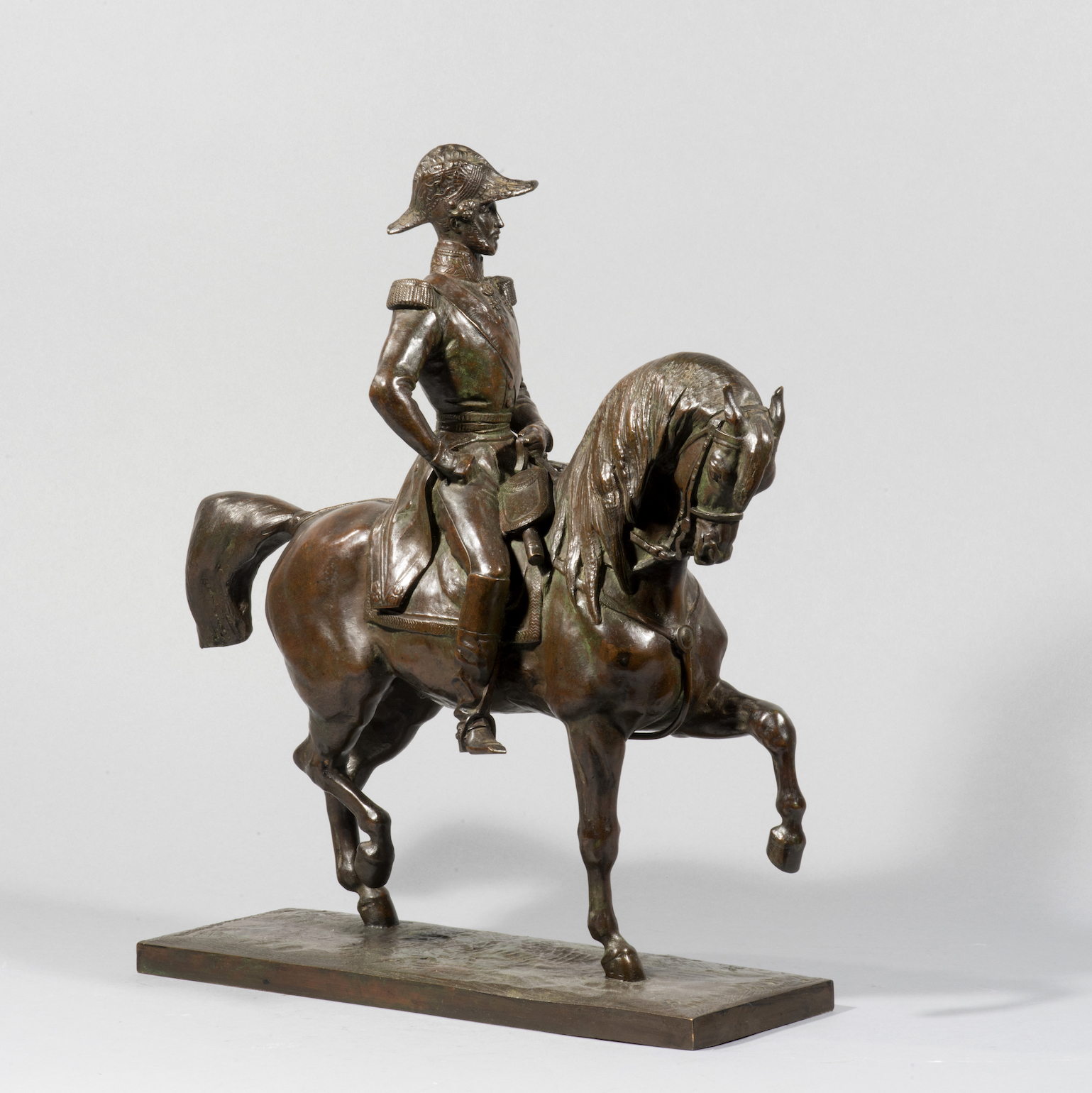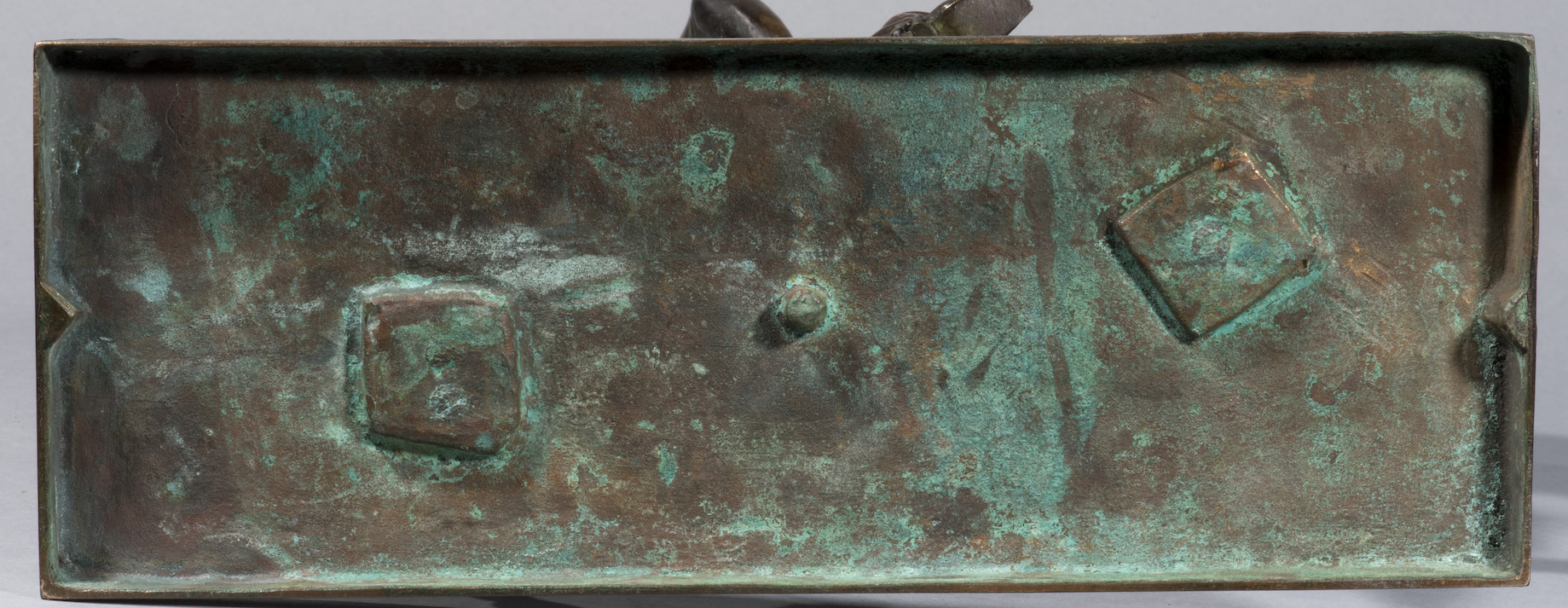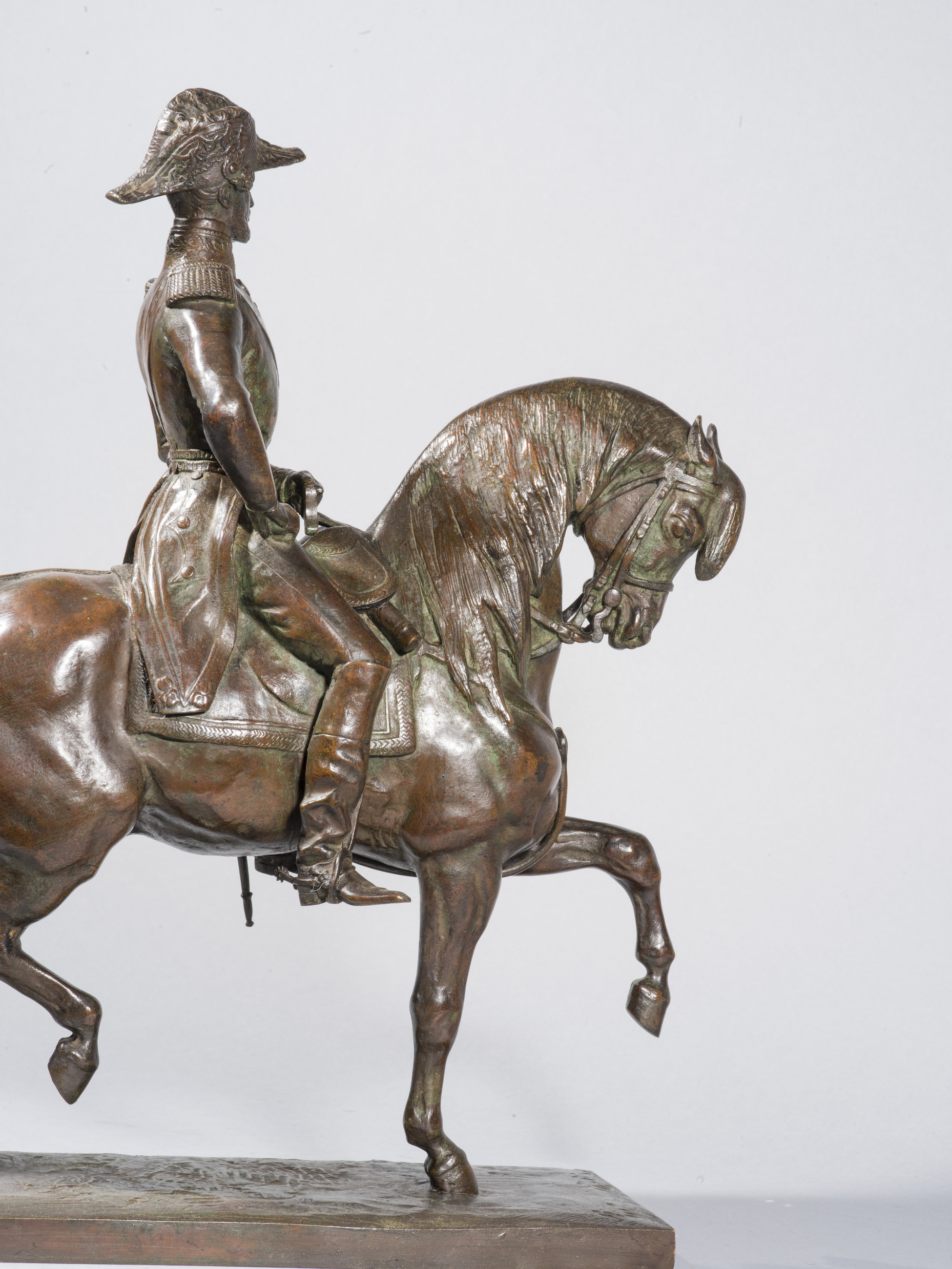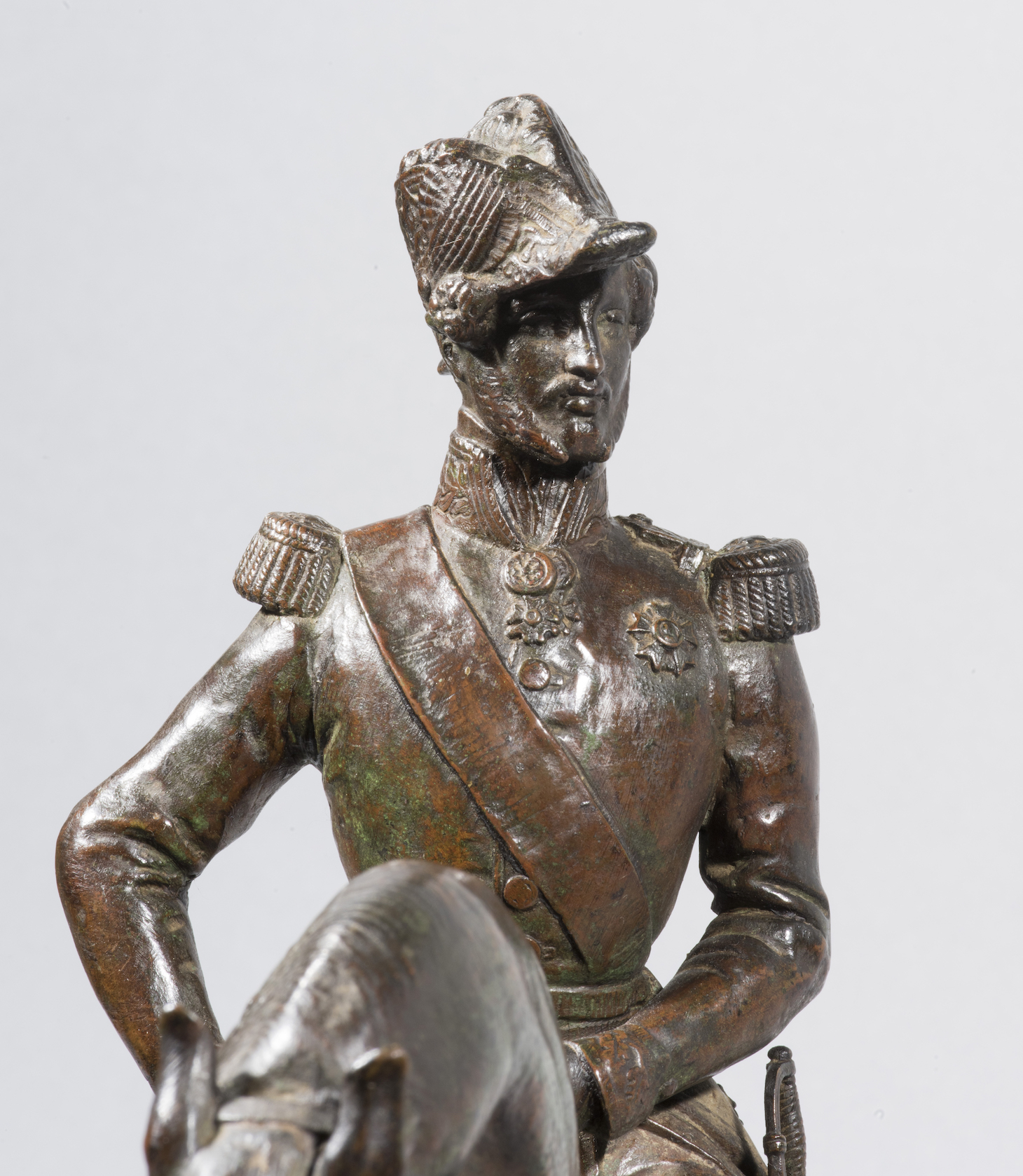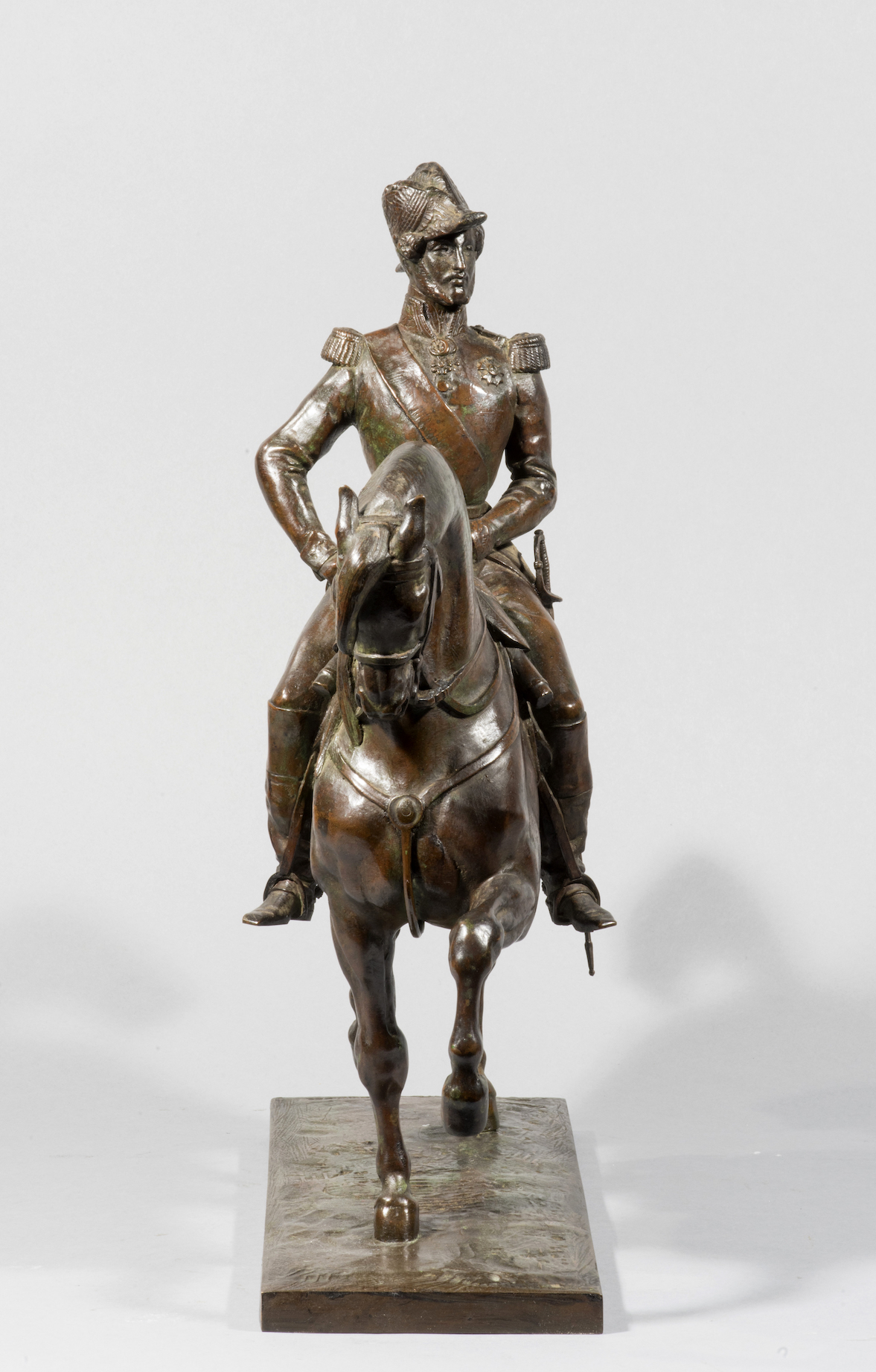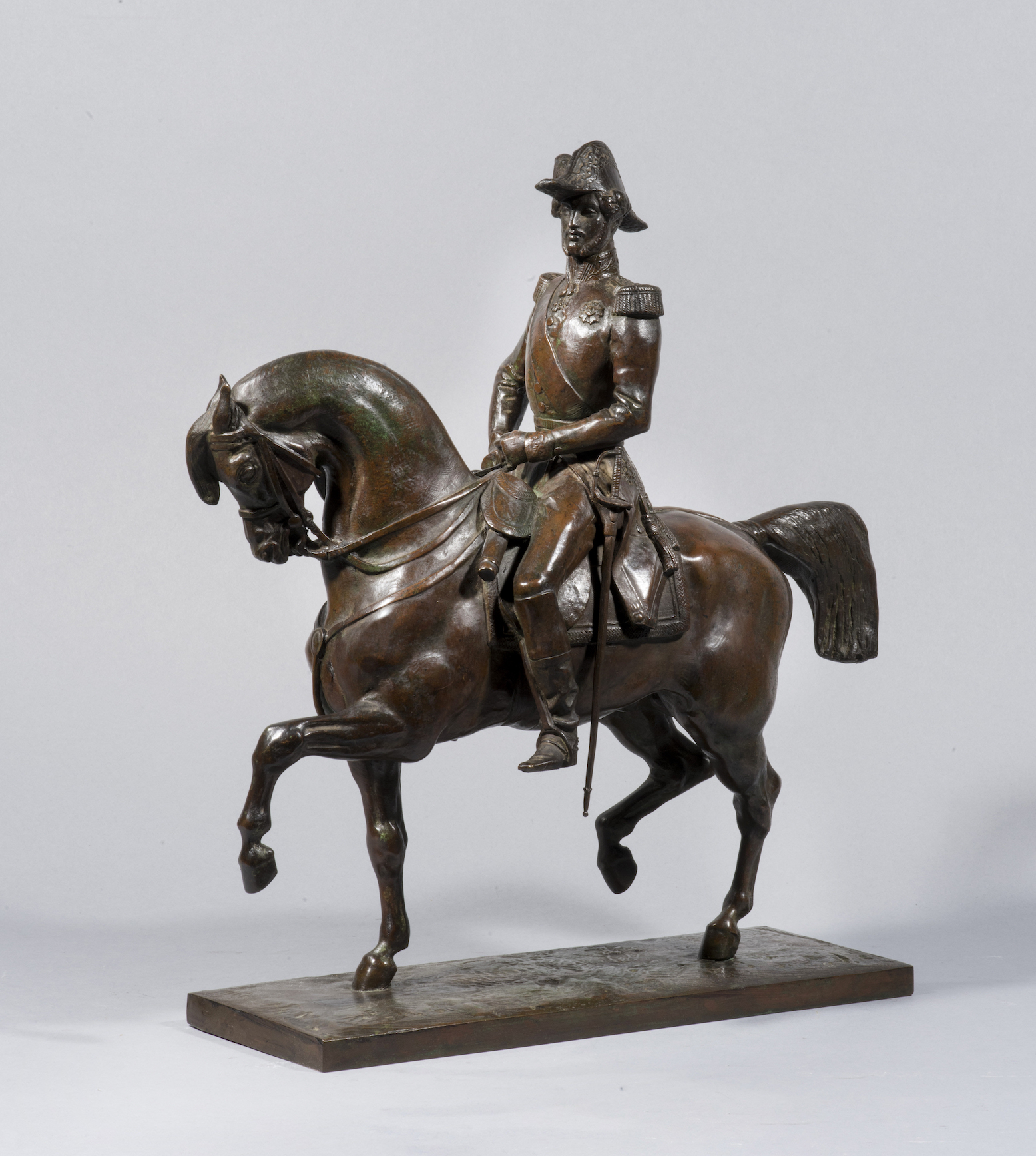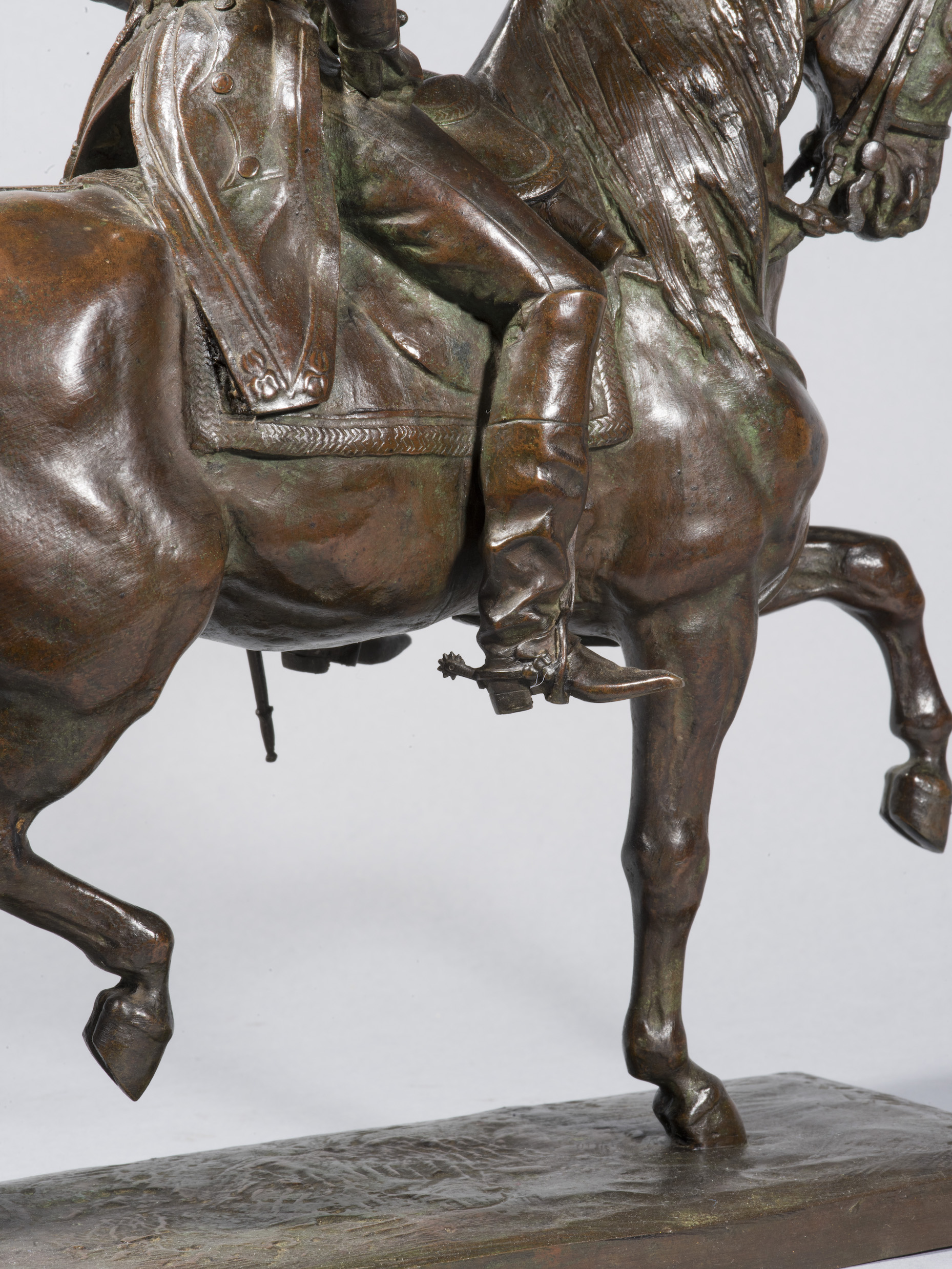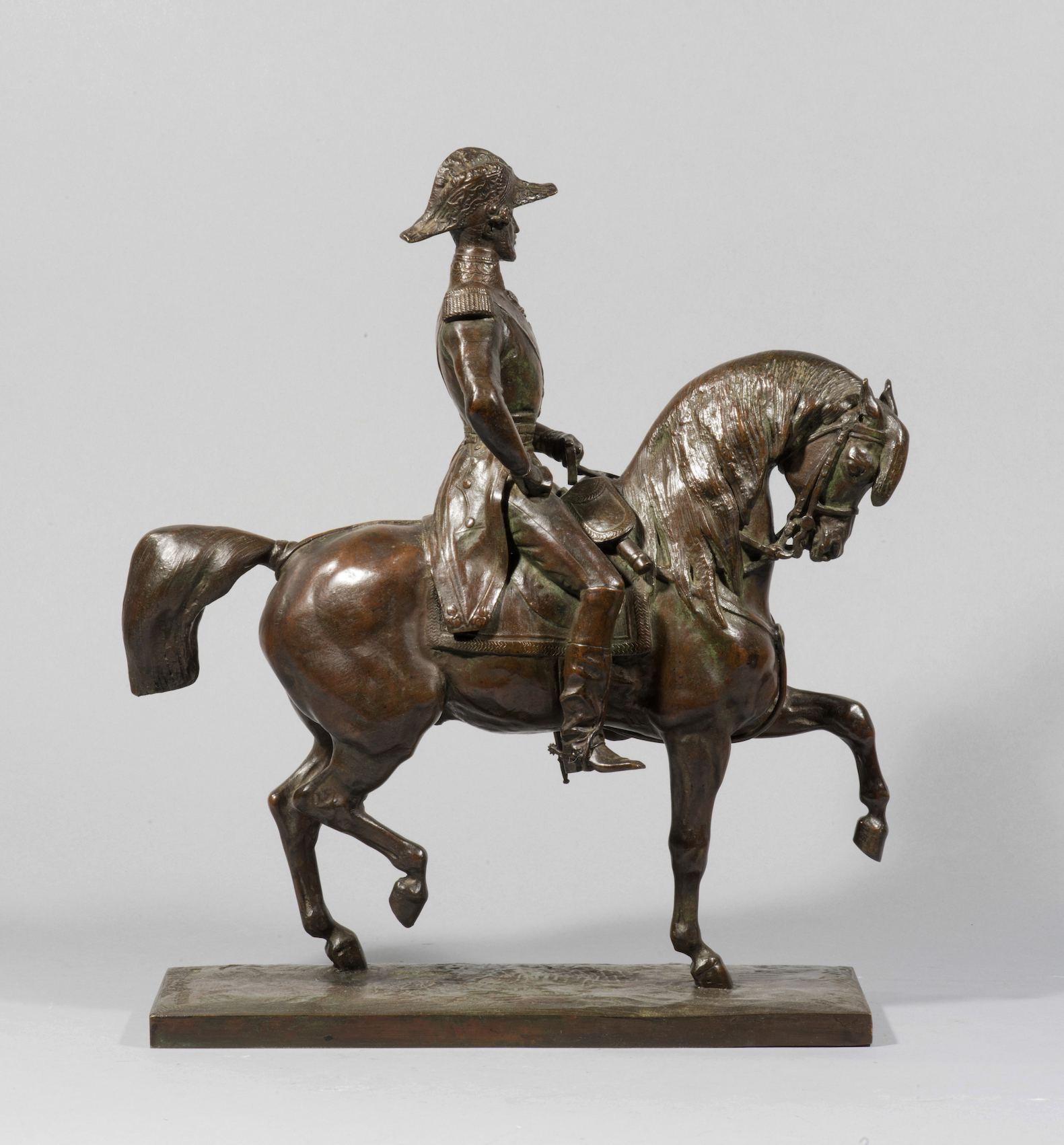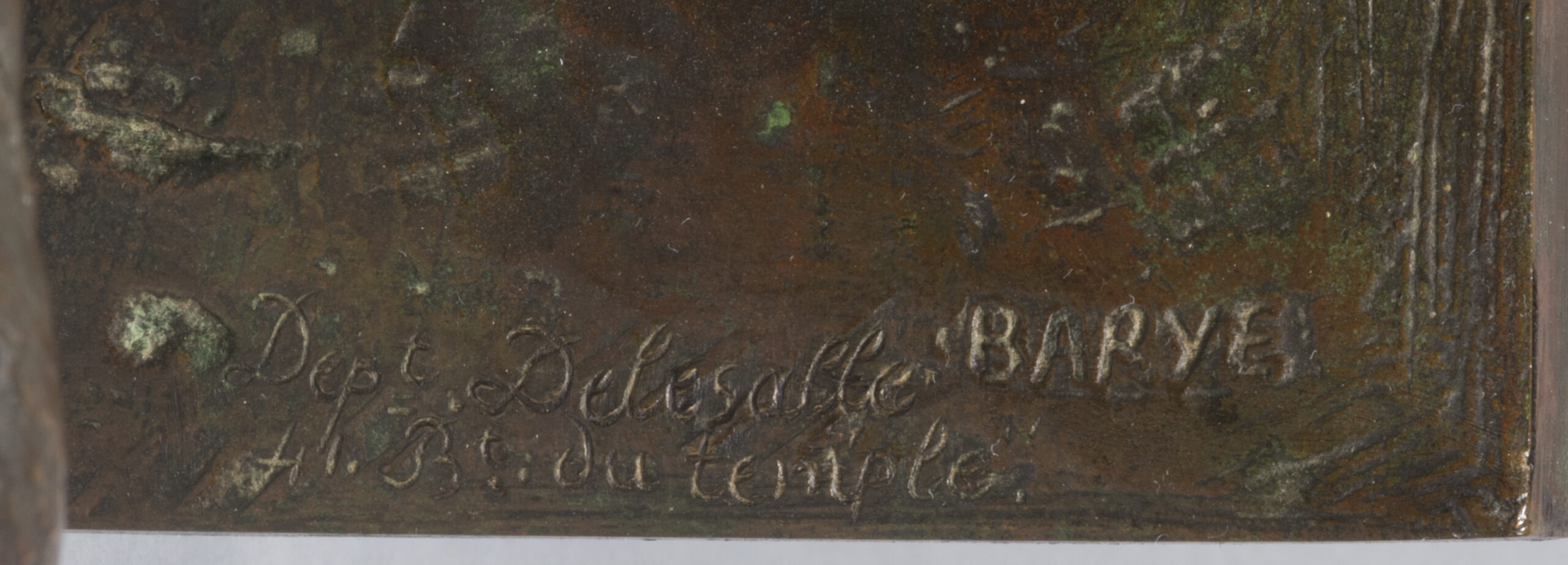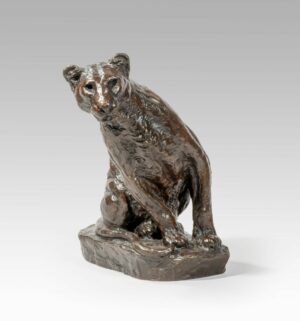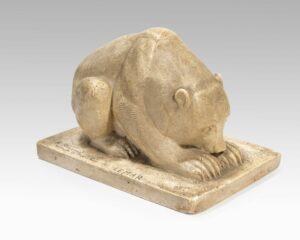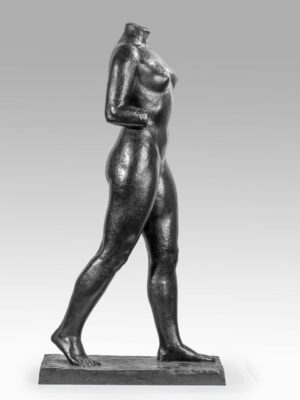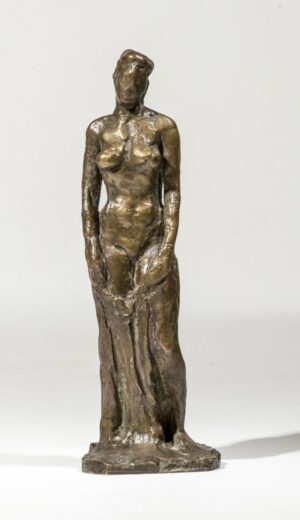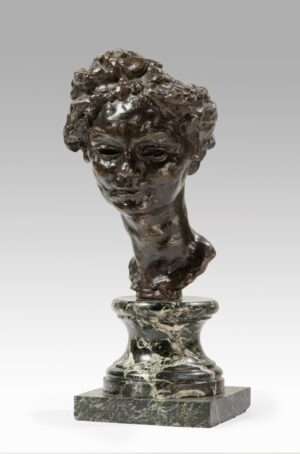Description
Here, Barye portrayed Ferdinand-Philippe d’Orléans (1810-1842), the eldest son of King Louis-Philippe, who died in a carriage accident in Neuilly. Yet this absurd death was one of the elements that made Ferdinand a legend: that of a handsome, heroic and romantic prince, the hope of the kingdom mowed down by fate. It was undoubtedly Alfred de Musset who summed up the general sentiment even better than the various depictions of the drama: “May God, who hears me, keep me from blasphemy/But I understand nothing of this cowardly destiny/Which is going to break a diadem on a paving stone/Because a postilion does not have his bridle in hand”.
It should also be remembered that the young duke turned out to be a true patron of the arts, and enabled our budding artist to establish himself as the Romantic sculptor of his generation, thanks mainly to the commission for an impressive tabletop surtout (1834-1839), a true masterpiece of the genre.
This equestrian statue is a posthumous tribute by the sculptor to his patron, and forms a counterpart to Le Général Bonaparte. Queen Amélie owned a copy, which she placed opposite her desk in the Tuileries Palace, circa 1845-1848. The price of the two sculptures varied according to the regime: under the July monarchy, Le Duc d’Orléans was twice as expensive as Le Général Bonaparte, proof of the sculptor’s preference for the royal family? During the Second Empire, Barye presented both statues at the same price
Our copy bears the inscription «dépositaire Delesalle, 41 boulevard du temple». Delesalle «bronzes d’art et d’ameublement, garnitures de cheminée, groupes, statuettes, suspensions, lustres, etc.» was one of the sculptor’s dealers until 1874.

